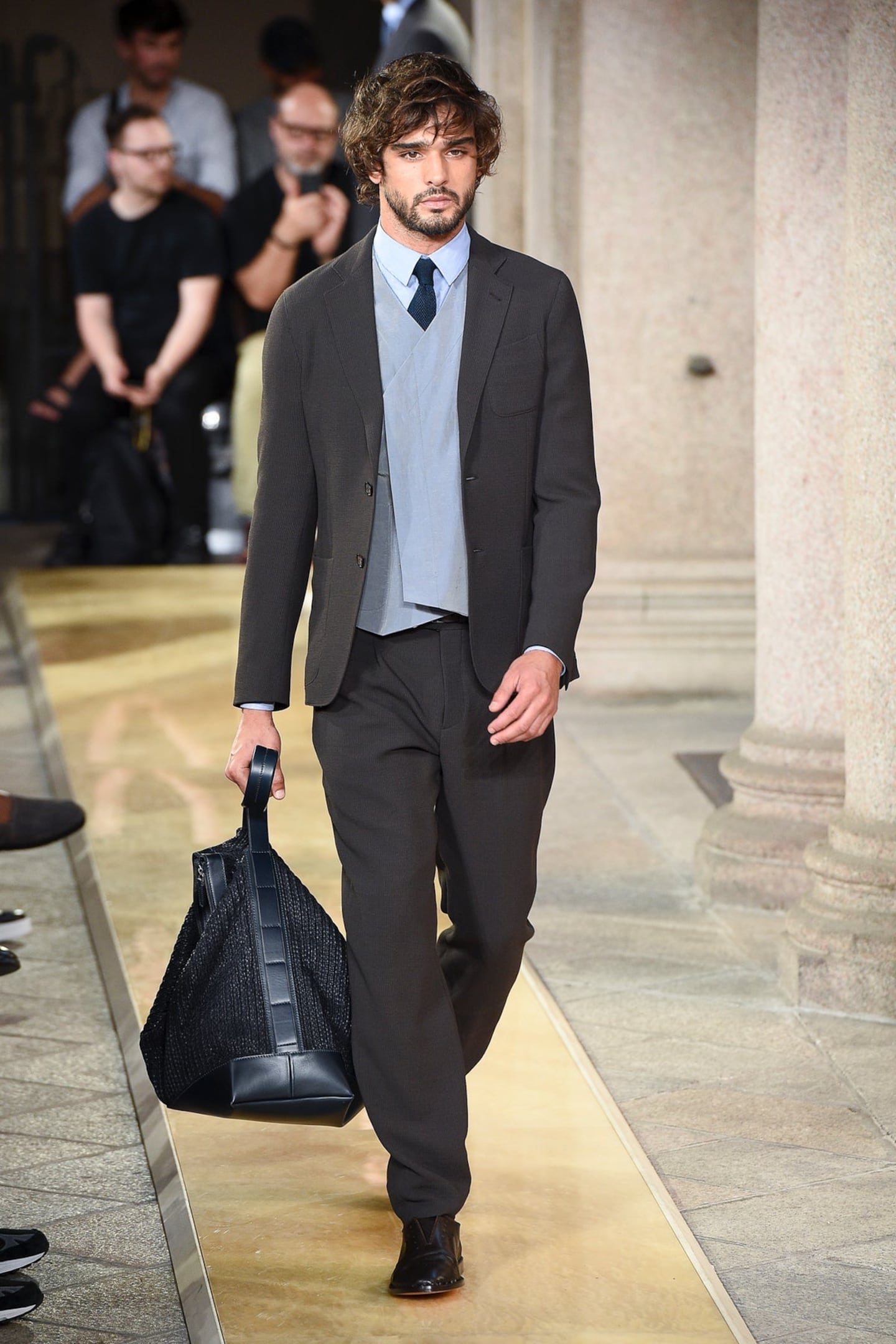
The Business of Fashion
Agenda-setting intelligence, analysis and advice for the global fashion community.

Agenda-setting intelligence, analysis and advice for the global fashion community.

MILAN, Italy — There were big changes this season at Armani. Emporio was shown in the usual venue, with a new set up. The mainline Giorgio, instead, was presented in the charming premises of Palazzo Orsini, at number 11 of the tony Via Borgonuovo, where the Armani headquarters have been based since 1996. The homecoming was a smart move: getting to see the clothes up close under the porches on the courtyard, in natural daylight, made the whole experience of attending the show a pleasurable thing.
Back home to where it all begins, season after season. Armani dished out the usual Giorgio Armani fare in soft tailoring, deconstruction and gentle masculinity, but the ease of the whole endeavour was particularly palpable. There was a lot of spontaneity in the mix of geometric patterns, in the layering of Nehru jackets and waistcoats, in the flowing of printed shirts worn with liquid trousers. In a press meeting before the show, Mr. Armani addressed the will to make his man sexier than he was in the past. Oh well, sexy is not exactly an Armani adjective, and the multiculti spirituality of the collection could hardly be labelled as such, despite the cast of beefcakes, some wearing jackets or vests bare-chested. Yet, there was certainly a sensuality to the whole, a quest for something as far from stiff as it possibly gets. In short, pure, undiluted Armani, welcomed with a standing ovation at the end.
From where aspirational customers are spending to Kering’s challenges and Richemont’s fashion revival, BoF’s editor-in-chief shares key takeaways from conversations with industry insiders in London, Milan and Paris.
BoF editor-at-large Tim Blanks and Imran Amed, BoF founder and editor-in-chief, look back at the key moments of fashion month, from Seán McGirr’s debut at Alexander McQueen to Chemena Kamali’s first collection for Chloé.
Anthony Vaccarello staged a surprise show to launch a collection of gorgeously languid men’s tailoring, writes Tim Blanks.
BoF’s editors pick the best shows of the Autumn/Winter 2024 season.